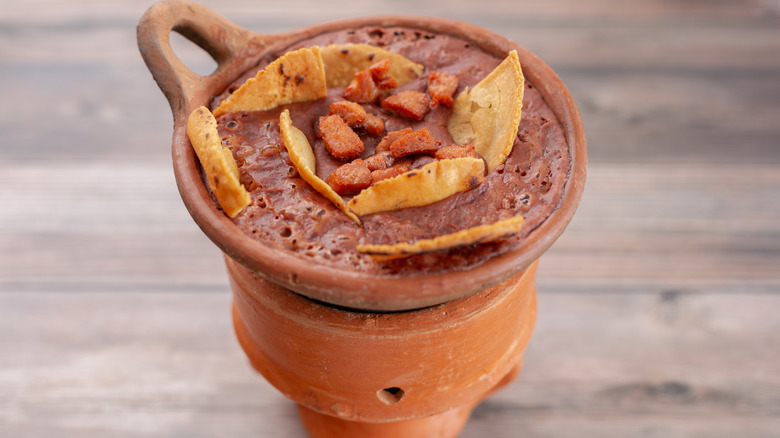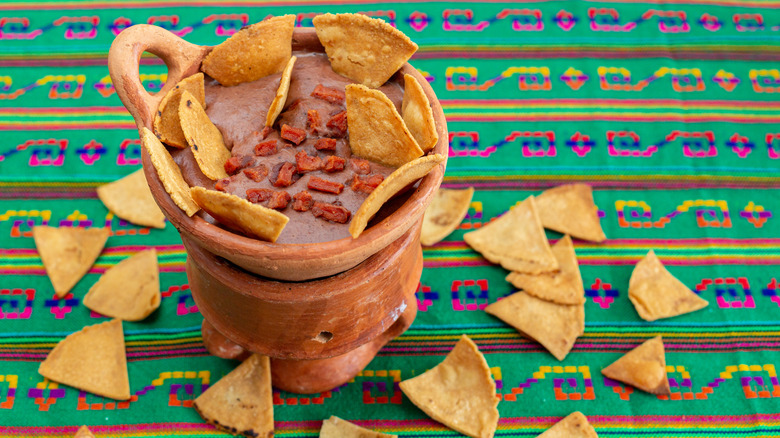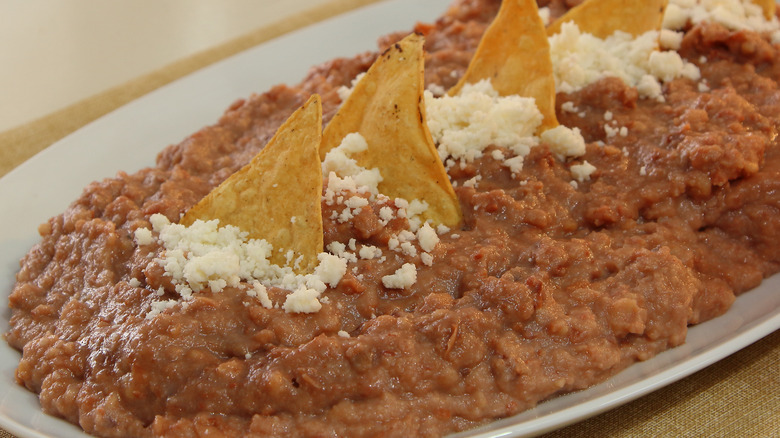Honduran Anafre: The Spicy Dip With A Rich History
There are few foods more convivial than a delicious dip. Load a medley of flavorful ingredients in a bowl, offer an edible utensil to scoop, and enjoy the fun — and casual — snacking experience. The food's appeal rests not just in the eating process but in all the varying textures involved, too.
If you're looking for some global inspiration for a flavorful dip loaded with texture, turn to the Honduran anafre. The dish is served in an eponymous vessel crafted by artisan pottery makers. It's propped over a batch of burning coal embers, which sizzle a delicious combination of refried beans, cheese, and chorizo. Scooped up with a bowl of chips and enjoyed with a beer, this mix of gooey cheese, rich beans, and meaty chorizo meld together beautifully, providing a mouthwatering entry point into a historic Honduran specialty. Let's dive into the details of how it came about.
Background of Honduran Anafre
Like a tagine, the anafre refers to both the dish and the vessel in which it's prepared. The pottery has a rich history that is part of the heritage of the indigenous Lencan people of Honduras, who have been producing beautiful clay works for centuries. The creation of such pieces is prominent in the community's cultural and economic output, intertwining both culinary and artisanal legacy. The anafre pot holds a place in the culture that symbolizes the efforts to preserve the Lencan identity through years of colonialization.
It may come as no surprise, then, that such a prominent container is used to serve the quintessential Honduran staple: beans. Especially in refried form, the legumes are enjoyed multiple times a day, and the anafre showcases the food with extra flair. There are a series of small openings in the pot's base, and embering hot coals are placed inside it, which keep the contents of the clay bowl on top hot. As a result, the anafre creates a fondue-like outcome, keeping the concoction of bean and cheese warm and ready to be scooped up. It's like a portable oven. A recent renewed interest in Honduran indigenous techniques has given the dish a new light.
What's in Honduran anafre?
The dish's cornerstone is a batch of refried beans, which are used for texture, flavor, and substance. The beans can be reheated and flavored with further aromatics, such as onions, broth, local plants, mushrooms, and more, depending on the region or person cooking the anafre. Next, the hearty food is paired with cheese, which adds a delicious gooey texture and mild dairy taste. Quesillo is the most common choice, with Mexican-made stringy Oaxacan cheese a common substitute. Some also add crema Hondureño — which is similar to Mexican crema — for an added dollop of rich creaminess. And finally, the anafre has chorizo. In the Central American nation, the cured pork product is prepared with a range of spices and aromatics, including paprika and cumin. All the better when such bold flavors are garnished with toppings such as cilantro or pickled jalapeño. Served with tortilla chips, and a cold beer (or two), the dip serves up the ideal dose of flavor and comfort.


